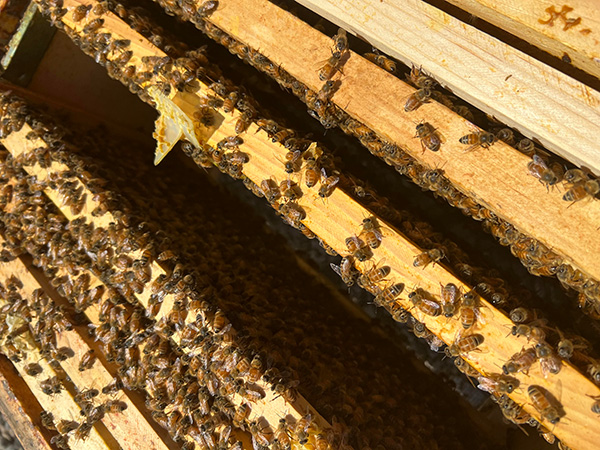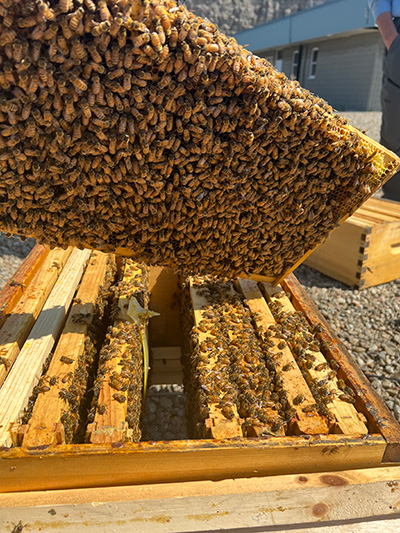Lafarge Canada’s Montreal-East plant has found the sweet spot for sustainability.
The company is giving back to the environment by installing beehives that promote biodiversity and preserve the insects.
“We’ve come up with this idea of the bees because we have a program that’s called the biodiversity indicator reporting system (BIRS),” explained Robert Cumming, head of sustainability and public affairs, Eastern Canada for Lafarge.

“We are in the resource extraction industry, so I think that puts the onus on us to be good stewards and maintain our mandate to ultimately be making progress for people and planet and not degradation for people and planet.”
As large landowners across Eastern and Western Canada, Lafarge, a provider of sustainable construction materials, has the opportunity to use those lands for good, Cumming added.
Bees are vital pollinators in the ecosystem and the company is doing its part to preserve them.
“When you look at an aggregate quarry, obviously as we are extracting the resource, whether it’s limestone or whatever it may be, there is a period of time when actually we’re not able to have biodiversity there,” said Cumming.
“But when we rehabilitate that property at the end of the day, we do have an opportunity to do some good work in terms of enhancing biodiversity.”
BIRS, which was co-developed with the International Union of the Conservation of Nature, is a specific methodology that can be used to measure biodiversity.
“Our commitment that we have made as part of our broader sustainability program is using this methodology to demonstrate that over time we are being biodiversity net positive,” Cumming explained. “That means you do a baseline and then over time, you come back five years later and you do the assessment again and you compare the scores. We’re working towards by 2030 to be positive.”
Lafarge partnered with Alveole to install the hives. Alveole helps companies achieve sustainability goals by bringing bees to their buildings.
“They have the boxes with the hives in them and they deliver. They walk us through what we need to do, which is very little actually,” said Cumming, adding they come in every three weeks to check on them.
“It can be done at all of our sites. We are looking at doing it at one of our ready-mix plants as well this year. This is our first. We’re testing the waters, but I think over time we would expect to do this at more and more properties.”
The boxes are about the size of a mini fridge.

“Bees will travel up to five kilometres from the beehive and they will form new beehives over time,” Cumming noted.
“Given the interesting nature of our site, where we do have some buffer areas, plus we also have the parks, it made us interested to use bees to pollinate and increase biodiversity.”
But it’s not just bees Lafarge is thinking about.
“The other thing we are working on in the same vein is planting milkweed across Ontario and Quebec in particular, because Monarch butterflies will only hatch in milkweed,” Cumming explained.
“Monarch butterflies are endangered, so we’re part of the broader network. We have 200 sites across Eastern Canada that we can plant milkweed at…Over time we are creating more and more milkweed habitat.”
Animals don’t understand property lines so one thing that helps to enhance biodiversity is working with neighbours, he added.
Lafarge recently announced a planned five-year expansion of its collaboration with the Forêt-Boucher Foundation, a local environmental conservation organization based in Quebec. The company plans to donate $75,000 over the next five years.
“It’s got nature trails and education programs and this would allow them to continue to evolve and they are right next door, so you can see how we can work together to enhance biodiversity,” Cumming said.
“They have also agreed to apply the BIRS methodology on their site as well. That gives us interesting opportunities to compare natural forest to our buffer lands and see how that compares and to learn from that and look for opportunities because each region is unique.”
Follow the author on Twitter @DCN_Angela



Recent Comments
comments for this post are closed